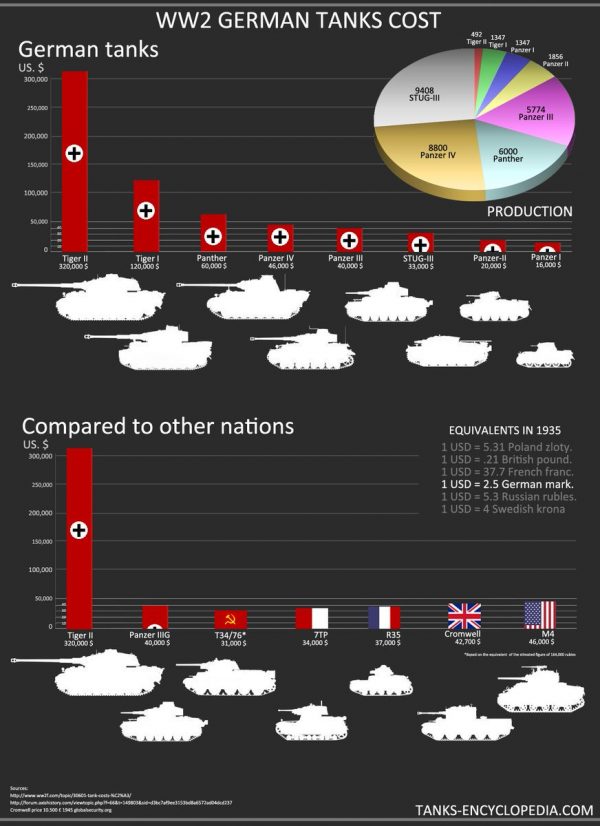Was the Tiger II any good?
Posted: Tue May 07, 2019 8:07 pm
Now I've got your attention....
I was reading through the 21st Army Group Technical Reports from late 1944 to the end of the war in the Tank Museum Archive today. I was actually trying to find reference to the fitting of "Normandy Cowls" flame suppressors to Comet but came across a number of interesting reports on the exploitation and evaluation of captured German armour.
The first concerned Zimmerit. I hadn't considered that although it was of little use against magnetic charges, as the Allies didn't use them, it did have an unexpected benefit:
I hadn't thought of that before.
Next was a very thorough report evaluating the Tiger II, a number of which had by that time fallen into Allied hands. The overall conclusion was that it had a formidable reputation which greatly exceeded its actual effectiveness. At a tactical level, tank on tank, it was seen as powerful and well protected but the report concluded that there was no point in designing in heavy frontal armour if in doing so, you left other more vulnerable areas and in the process produced a tank with very limited mobility.
One section of the report deals with vulnerability to air to ground rockets. The RAF claimed that rocket firing Typhoons decimated German armour in Normandy. Elsewhere, the Operational Evaluation staffs concluded that the fundamental inaccuracy of the weapons lead to gross over claiming. This report indeed states that POWs had revealed that on being attacked by aircraft, Panzer crews could release smoke flares which simulated a hit and that was often effective in convincing the pilots to go elsewhere. The report does then go on to evaluate the effectiveness of both Tiger I and Tiger II against air to ground rockets.
It concludes that the imbalance between protection and mobility on both tanks made them more vulnerable than they need have been and in the process made them less effective at the operational level.
I suspect this is a view that the World of Tanks generation might find difficult to accept.
I did find one more comment from a less than impartial witness. You could forgive Monty for not sitting on the fence:
The underlying point he's making though is valid, that Tiger I and Tiger II were much respected by their opponents on the ground, at formation level they were too often in the wrong place or not available because of mechanical unreliability, lack of operational mobility and high fuel consumption. This was the direct result of an imbalance between firepower, protection, mobility and reliability. The reports in effect concludes that Tigers I and II were the wrong tanks to serve the needs of the Wehrmacht in 1944-45 in the Western theatre of operations. They do look good though in 1/6th scale.
I was reading through the 21st Army Group Technical Reports from late 1944 to the end of the war in the Tank Museum Archive today. I was actually trying to find reference to the fitting of "Normandy Cowls" flame suppressors to Comet but came across a number of interesting reports on the exploitation and evaluation of captured German armour.
The first concerned Zimmerit. I hadn't considered that although it was of little use against magnetic charges, as the Allies didn't use them, it did have an unexpected benefit:
I hadn't thought of that before.
Next was a very thorough report evaluating the Tiger II, a number of which had by that time fallen into Allied hands. The overall conclusion was that it had a formidable reputation which greatly exceeded its actual effectiveness. At a tactical level, tank on tank, it was seen as powerful and well protected but the report concluded that there was no point in designing in heavy frontal armour if in doing so, you left other more vulnerable areas and in the process produced a tank with very limited mobility.
One section of the report deals with vulnerability to air to ground rockets. The RAF claimed that rocket firing Typhoons decimated German armour in Normandy. Elsewhere, the Operational Evaluation staffs concluded that the fundamental inaccuracy of the weapons lead to gross over claiming. This report indeed states that POWs had revealed that on being attacked by aircraft, Panzer crews could release smoke flares which simulated a hit and that was often effective in convincing the pilots to go elsewhere. The report does then go on to evaluate the effectiveness of both Tiger I and Tiger II against air to ground rockets.
It concludes that the imbalance between protection and mobility on both tanks made them more vulnerable than they need have been and in the process made them less effective at the operational level.
I suspect this is a view that the World of Tanks generation might find difficult to accept.
I did find one more comment from a less than impartial witness. You could forgive Monty for not sitting on the fence:
The underlying point he's making though is valid, that Tiger I and Tiger II were much respected by their opponents on the ground, at formation level they were too often in the wrong place or not available because of mechanical unreliability, lack of operational mobility and high fuel consumption. This was the direct result of an imbalance between firepower, protection, mobility and reliability. The reports in effect concludes that Tigers I and II were the wrong tanks to serve the needs of the Wehrmacht in 1944-45 in the Western theatre of operations. They do look good though in 1/6th scale.
